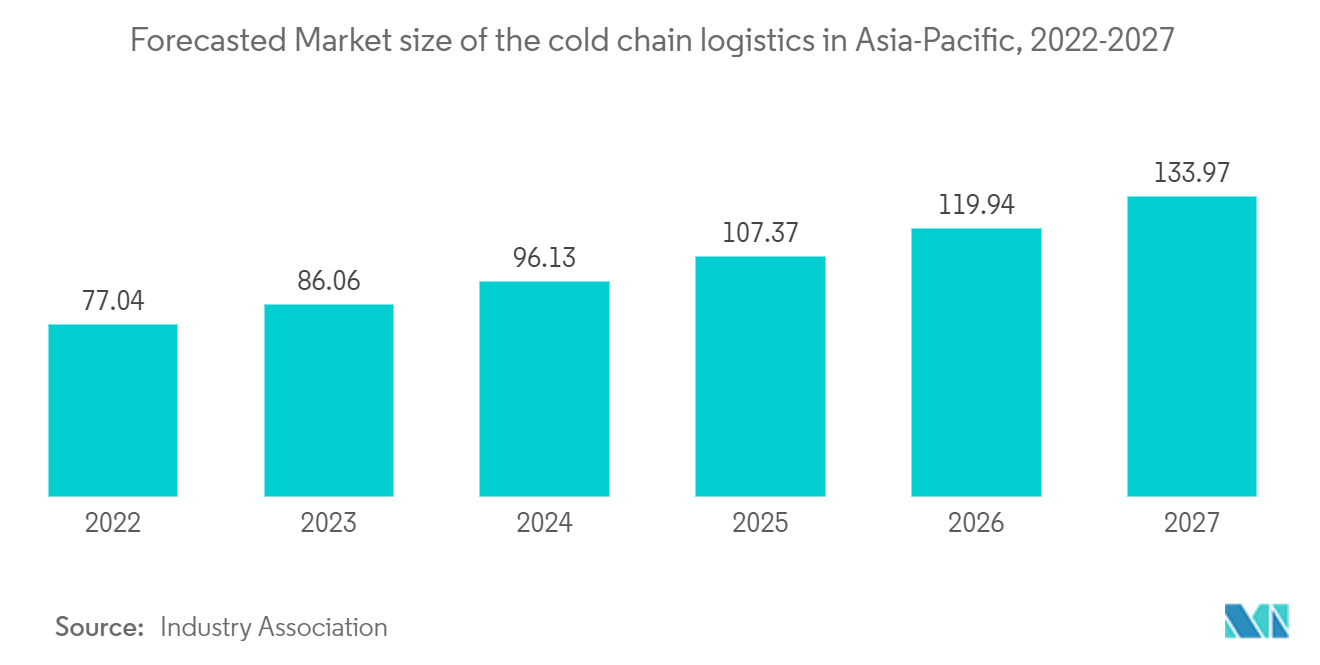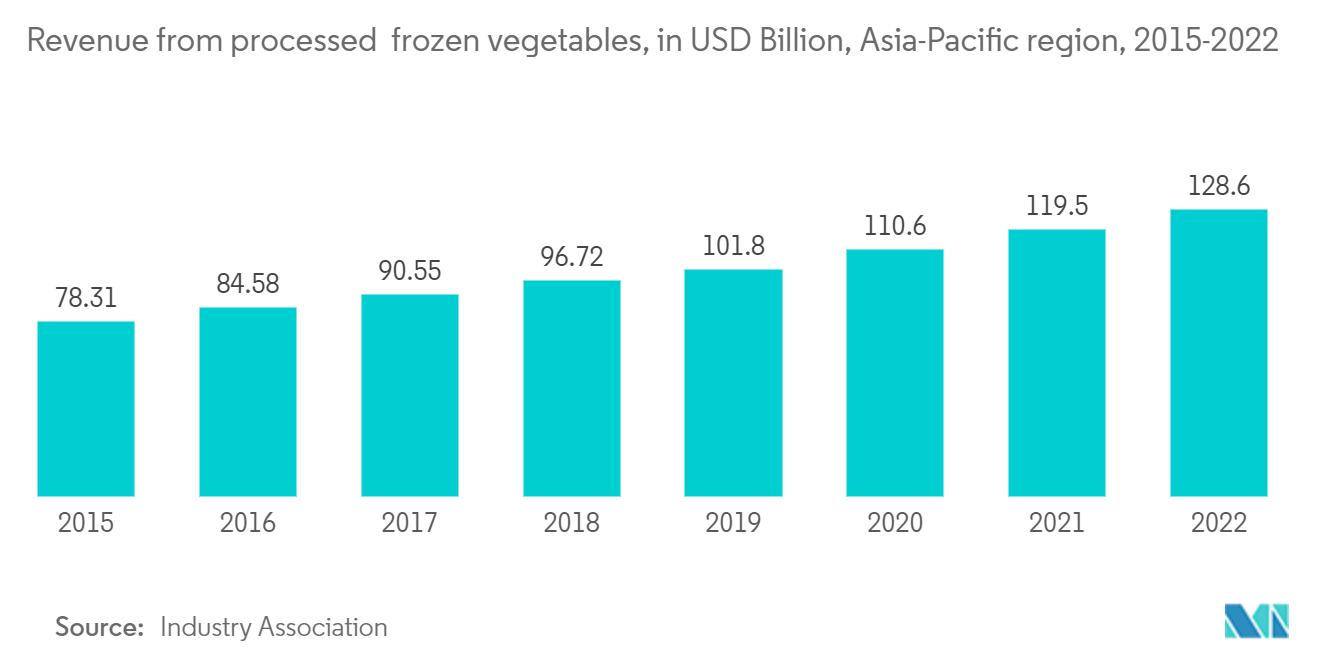Market Trends of Asia Pacific Refrigerated Container Shipping Industry
Preference for maritime trade over aerial trade growing
The pharmaceutical industry is shifting its focus to the use of cutting-edge technology in the supply chain and is looking for new methods to guarantee the safe delivery of medical products to their intended destinations. Control tower technology, packaging automation, artificial intelligence, and other technologies are at the center of the pharmaceutical industry's cold chain development. Lately, progress propels in the turn of events and scattering of temperature-touchy drug items, going from biologic treatments to treat interesting and constant sicknesses, Coronavirus antibodies and immunizations for other irresistible illnesses, novel oncology therapies and cell and quality (CGT) treatments, made more perplexing cold-chain necessities than any time in recent memory.
According to the most recent appraisals, in August 2022, India's cold capacity limit is probably going to arrive at 40.7 million metric tons by 2023, rising 8.2% from 2020, which will likely open doors in Indian virus chain resources, which will help to drive the market development. Additionally, according to public details, the virus affix area is supposed to develop at over 20% CAGR by 2025, which is credited to empowering the shift from regular cold stockpiling to current extra rooms. A new cold storage facility for temperature-controlled goods was announced by AP Maersk Company in August 2022 and is expected to open in the first quarter of 2023 in Ridgeville, South Carolina.
China includes immense buyer interest in drug items for different ongoing sicknesses, which is raising the requirement for cutting-edge cold chain areas. Cold chain logistics are expanding as a result of increased investments in cold chain infrastructure made by the Chinese government at all levels. For example, in June 2022, according to the Public Turn of Events and Change Commission, China dispensed USD 207.35 million to help cold chain and public planned operations center development.

Demand for frozen foods driving the growth of the market
A change in buyer inclination for frozen food variety items brought about the developing interest for truck refrigeration units by numerous businesses. Besides, there is an expanded reception of refrigerated products of the soil by buyers and transportation of clinical medications, immunizations, general prescriptions, and enhancements from one side of the planet to the other.
Globalization, increased demand for temperature-controlled food systems and containers, and technological advancements in refrigerated transport equipment are all to blame for the expansion of the refrigerated transport market. The refrigerated transport market is experiencing significant growth in emerging nations due to a need for more skilled labor. Likewise, the ongoing nearby players in agricultural nations like India give refrigerated transport benefits that need to be improved when contrasted with their Western partners. The quality of the product could be improved as a result, and customers are less likely to make purchases. Packages that make it easier to use at home and on-the-go focus on convenience features. Comfort highlights, like simple opening, convenience, and one-gave use, keep on driving frozen food-bundling development for a large number of handled food sources, including courses, bites, and even food administration items. Because they need packaging that is simple and flexible, processed foods are convenient and simple to use. As a result, the market is expected to be driven by consumer demand for frozen foods.
Two distinct trends are used to assess the importance of the agro-industrial sector for developing nations. First, both exports and imports from developing nations now overwhelmingly consist of frozen processed products in the Asia-Pacific food trade. Second, the "non-traditional exports" of food shifted significantly in the composition of food exports from developing nations. These commodities offer new open doors for improvement methodologies, albeit the most uncreated nations moved from net food exporters to net shippers of handled items primarily.


